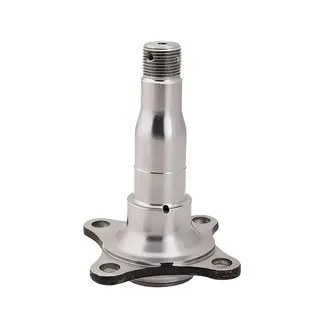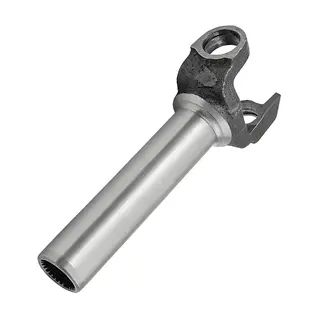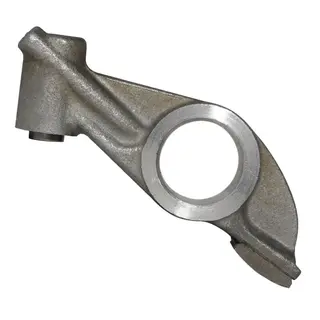In modern manufacturing, forging is an indispensable metalworking process. It applies immense pressure to cause plastic deformation of metal materials, thereby producing workpieces with specific shapes and properties. The quality of forging processes depends not only on operational techniques but also heavily on the materials selected. This article will explore in depth the types and characteristics of forging materials, as well as the key elements of forging processes, helping readers gain a comprehensive understanding of the core knowledge in the forging industry.
In forging processes, selecting the right material is a crucial step in ensuring the performance and quality of the final product. Different forging materials possess different physical and chemical properties, which directly influence the ease of the forging process and the performance of the final product. Below, we will introduce the types of forging materials in detail, including their characteristics, applications, and considerations during forging.
Carbon steel and alloy steel are the most common materials used in forging. Carbon steel is mainly composed of iron and carbon and can be divided into low-carbon steel, medium-carbon steel, and high-carbon steel depending on the carbon content.
Low-carbon steel has good forgeability and toughness, making it suitable for manufacturing forgings with complex shapes.
Medium-carbon steel achieves a good balance between strength and toughness and is often used to produce components that bear larger loads.
High-carbon steel has high hardness and good wear resistance, making it suitable for tools and wear-resistant parts.
Alloy steel is based on carbon steel with the addition of alloying elements such as chromium, nickel, and molybdenum. These additions significantly improve the performance of the steel. For example:
Chromium increases hardness and wear resistance.
Nickel improves toughness.
Molybdenum enhances high-temperature strength.
Therefore, alloy steel is widely used in demanding fields such as aerospace and automotive manufacturing.
Aluminum alloys are valued for their light weight, high strength, and good thermal and electrical conductivity. They are widely used in aerospace and automotive industries, especially in applications where weight reduction is critical. Common aluminum alloys include 6061 and 7075.
6061 aluminum alloy offers good machinability and moderate strength, suitable for a variety of structural parts.
7075 aluminum alloy has higher strength but is relatively more difficult to process.
Titanium alloys are high-performance metals with advantages such as high strength, low density, corrosion resistance, and heat resistance. They are widely applied in aerospace, medical devices, and chemical industries. Because of their high melting point and strong reactivity, forging titanium alloys requires special equipment and technology to ensure performance. For example, heating temperature and deformation rate must be strictly controlled to prevent cracking.
Nickel-based superalloys are materials that maintain high strength and corrosion resistance under high-temperature conditions. They are commonly used to manufacture parts for aircraft engines, gas turbines, and other high-temperature applications. Typical nickel-based alloys include chromium-nickel-iron alloys and Hastelloy. These alloys possess excellent oxidation and creep resistance at high temperatures, but they are difficult to forge and require precise control of temperature and deformation conditions.
Copper alloys, with their excellent thermal and electrical conductivity, are often used in electronic devices, wires, and precision components. Their forging process is relatively simple, but heating temperature must be carefully controlled to prevent grain growth, which would impair material properties.
After understanding the types and characteristics of forging materials, we now turn to the key elements of the forging process. These elements are crucial to ensuring smooth operations and the quality of the final product. Regardless of the material chosen, every detail of the forging process must be carefully controlled to achieve the best results.
The forging ratio refers to the ratio of the cross-sectional area of the metal before deformation to that after deformation. It is an important parameter for evaluating the degree of deformation during forging. Selecting the proper forging ratio is essential for improving the performance of forgings. For example, large ingots require a higher forging ratio to break down columnar crystals, refine grains, and achieve superior metal structure and mechanical properties. In contrast, small- and medium-sized forgings, such as round or square bars, only require a relatively small forging ratio to meet the requirements.
Heating temperature and holding time are two critical parameters in the forging process. Different materials have different heating requirements. For example, carbon steel is generally heated to about 1200 °C, while aluminum alloys are heated to about 450 °C. Excessively high heating temperatures cause grain growth and reduce mechanical properties, while excessively low temperatures make deformation difficult. Holding time must be determined based on the size and shape of the billet to ensure uniform internal temperature.
The starting forging temperature is the temperature of the billet at the beginning of forging, while the finishing forging temperature is that at the end of forging. Reasonable control of these temperatures is vital for a smooth forging process and for ensuring product quality. For instance, carbon steel usually has a starting forging temperature of around 1100 °C and a finishing temperature of about 800 °C, whereas aluminum alloys typically start at about 400 °C and finish at about 300 °C. If the finishing temperature is too low, the material may crack during forging.
The amount of deformation refers to the degree of shape change that occurs in the metal during forging, while the deformation speed refers to the extent of deformation per unit of time. Proper control of both parameters can significantly improve forging performance. For example, high-carbon steel and alloy steel require a large deformation amount to break grains, but the deformation speed must not be too fast, otherwise cracking may occur. For aluminum alloys and titanium alloys, since their plasticity range is relatively narrow, the deformation speed must be strictly controlled to avoid overheating or cracking.
The forging process requires not only theoretical support but also flexible adjustments and optimizations in actual production to improve efficiency, reduce costs, and enhance product quality. Below are the applications of different forgings in various scenarios.
Small- and medium-sized forgings generally use round or square bars as billets. Bars have uniform grain structure and mechanical properties, accurate shape and dimensions, and good surface quality, making them suitable for mass production. In production, as long as the heating temperature and deformation conditions are properly controlled, high-performance forgings can be produced without requiring large forging deformation. For example, automotive parts, tools, and structural components are commonly forged from carbon steel or alloy steel bars.
Large forgings generally use ingots as billets. Ingots have as-cast structures with coarse columnar crystals and loose centers. Therefore, large plastic deformation is necessary to break columnar crystals into fine grains and to compact internal porosity, thereby achieving excellent metal structures and mechanical properties. For example, shaft components of large ships and engine parts of aerospace equipment are often forged from large ingots.
For some special materials, such as iron-based superalloys, nickel-based superalloys, and cobalt-based superalloys, the plasticity range is relatively narrow, making forging more difficult. Forging these materials requires strict control of heating temperature, starting forging temperature, and finishing forging temperature. For instance, nickel-based superalloys must be forged at high temperatures with slow deformation rates to prevent cracking. In addition, appropriate heat treatment is required to enhance material performance.
Material testing and quality control are key steps to ensuring the integrity and performance of forged components. During forging, raw materials must undergo strict inspection, including chemical composition analysis, metallographic examination, and mechanical property testing. For example, chemical analysis ensures that raw materials meet design requirements; metallographic examination reveals grain size and structural uniformity; mechanical testing evaluates strength, toughness, and hardness.
In the forging process, real-time monitoring and quality control of forgings are also required. For example, ultrasonic testing can detect internal defects such as cracks, porosity, and inclusions, while surface hardness testing assesses surface hardness and wear resistance. If quality problems are found, corrective measures such as reworking or scrapping must be taken promptly.
Forging is an essential metalworking process, and its quality and efficiency depend on the chosen materials and process parameters. This article has detailed the types and characteristics of forging materials and the key elements of forging processes. By selecting suitable materials and optimizing forging methods, high-quality forgings can be produced to meet the demands of various industries. Furthermore, material testing and quality control are critical to ensuring the performance and integrity of forged components and must be strictly implemented. With continuous technological advancement, forging processes will keep improving and innovating, providing stronger support for the development of modern manufacturing.



